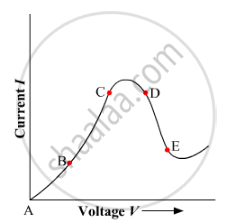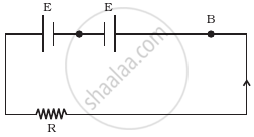Advertisements
Advertisements
प्रश्न
Will current flow more easily through a thick wire or a thin wire of the same material, when connected to the same source? Why?
Will current flow more easily through a thick wire or a thin wire of the same material when connected to the same source? Give reason for your answer.
उत्तर १
The current will flow more easily through thick wire. It is because the resistance of a
conductor is inversely proportional to its area of cross-section. If thicker the wire, less is resistance and hence more easily the current flows.
उत्तर २
Resistance (R) is inversely proportional to the area of the cross-section (A) of the
wire. So, thicker the wire, lower is the resistance of the wire and vice-versa.
Therefore, current can flow more easily through a thick wire than a thin wire.
`R = rho xx l/A`
`R ∝ 1/A`
उत्तर ३
The resistance of a conductor is inversely proportional to its area of cross-section, i.e. `R ∝ 1/A`. So as the conductor is a thick wire, its resistance decreases and current will flow easily through it, in comparison with a thin wire.
APPEARS IN
संबंधित प्रश्न
What will be the change in the current if the potential difference is kept constant and the resistance of the circuit is made four times?
- It will remain unchanged.
- It will become four times.
- It will become one-fourth.
- It will become half.
Graph showing the variation of current versus voltage for a material Ga As is shown in the figure. Identify the region of
(i) negative resistance
(ii) where Ohm's law is obeyed.

What is Resistivity?
The unit of electrical resistance is:
(a) ampere
(b) volt
(c) coulomb
(d) ohm
The graph between V and I for a conductor is a straight line passing through the origin.
What should remain constant in a statement of this law?
How much energy is consumed when a current of 5 amperes flows through the filament (or element) of a heater having resistance of 100 ohms for two hours? Express it in joules.
In a conductor 6.25 × `10^16` electrons flow from its end A to B in 2 s. Find the current flowing through the conductor (e = 1.6 × `10^-19` C)
A wire of resistance 3 ohm and length 10 cm is stretched to length 30 cm. Assuming that it has a uniform cross section, what will be its new resistance?
What length of copper wire of resistivity 1.7 × 10-8 Ω m and radius 1 mm is required so that its resistance is 2Ω?
Draw a neat diagram for the verification of Ohm’s law by voltmeter-ammeter method. By another diagram show the relation between p.d. and current.
Ohm’s law states the relationship between power and voltage.
A wire connected to a power supply of 230 V has power dissipation P1. Suppose the wire is cut into two equal pieces and connected parallel to the same power supply. In this case, power dissipation is P2. The ratio of `"P"_2/"P"_1` is
State microscopic form of Ohm’s law.
An electronics hobbyist is building a radio which requires 150 Ω in her circuit, but she has only 220 Ω, 79 Ω, and 92 Ω resistors available. How can she connect the available resistors to get the desired value of resistance?
The temperature of a conductor is increased. The graph best showing the variation of its resistance is:
Consider a current carrying wire (current I) in the shape of a circle. Note that as the current progresses along the wire, the direction of j (current density) changes in an exact manner, while the current I remain unaffected. The agent that is essentially responsible for is ______.
Two cells of same emf E but internal resistance r1 and r2 are connected in series to an external resistor R (Figure). What should be the value of R so that the potential difference across the terminals of the first cell becomes zero.
Suppose there is a circuit consisting of only resistances and batteries and we have to double (or increase it to n-times) all voltages and all resistances. Show that currents are unaltered. Do this for circuit of Example 3.7 in the NCERT Text Book for Class XII.
What is the resistance of a conductor through which a current of 0.5 A flows when a potential difference of 2V is applied across its ends?
